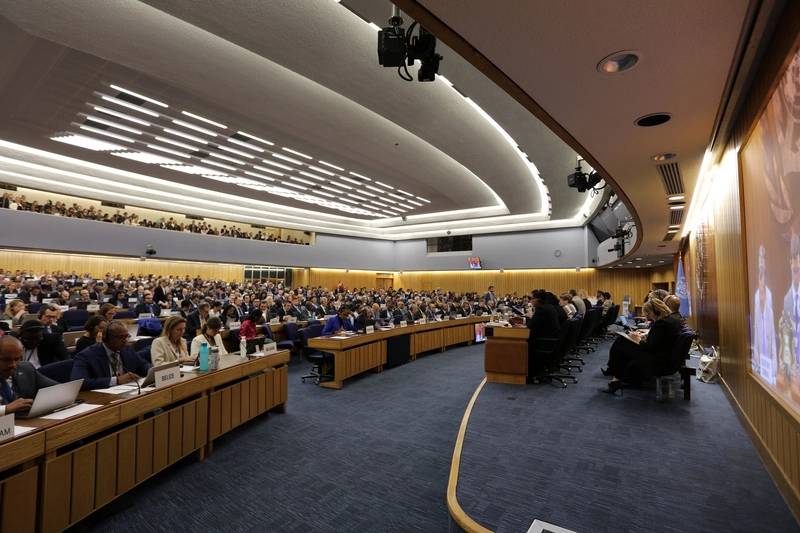IMO Finalizes Norwegian and Canadian ECA Designations
The IMO’s Marine Environment Protection Committee (MEPC) held its 82nd session from September 30 to October 4, 2024, with outcomes including the adoption of the Canadian Arctic and the Norwegian Sea as NOx, SOx and PM Emission Control Areas.
The relevant MARPOL amendments will enter into force on March 1, 2026.

DNV reports that for the Canadian Arctic:
• The 0.10% fuel sulphur content requirement takes effect from March 1, 2027.
• Tier III NOx requirements will apply to ships constructed (keel-laid) on or after 1 January 2025, although the requirements will enter into force on March 1, 2026.
For the Norwegian Sea:
• The 0.10% fuel sulphur content requirement takes effect from March 1, 2027.
• Tier III NOx requirements will apply to ships contracted on or after 1 March 2026; or in the absence of a contract, keel laid on or after September 1, 2026 or delivered on or after March 1, 2030.
Net-Zero Framework
The International Chamber of Shipping (ICS) welcomed progress made by MEPC 82 on the Net-Zero Framework.
The ICS issued a statement acknowledged the progress achieved on developing a base text for amendments to the MARPOL Convention to help ensure delivery of the IMO’s goal for international shipping to deliver net-zero greenhouse gas (GHG) emissions by or close to 2050.
However, it says, much more work still needs to be undertaken by governments before this Net-Zero Framework is ready to be approved at next year’s critical MEPC meeting in April.
“We are pleased that the concept of a universal GHG contribution by ships, per tonne of CO2e emitted, remains firmly on the table at IMO. There is strong support for this from a clear majority of IMO Member States, which also control most of the world’s shipping tonnage.
“There is also broad agreement, as advocated by the shipping industry, about the need to reduce the cost gap with conventional marine fuel oil to incentivise a rapidly accelerated uptake of zero/near-zero GHG fuels and technologies. The vital need for a reward element for first movers, and for setting up an IMO Fund to support a just and equitable transition in developing countries is clear.
“ICS appreciates the good co-operation between the various proponents for a GHG contribution measure (the EU/Japan, Bahamas/Liberia/ICS, plus Caribbean and Pacific Island States) to streamline their suggested regulatory texts which have very much in common and share the same core objectives. We remain committed to supporting these efforts and will continue to work with governments on all sides of the debate to find equitable regulatory solutions that can enjoy broad consensus support.”
CII, SEEMP and EEXI
MEPC 82 commenced the review of the short-term GHG measures (CII, SEEMP and EEXI) by considering gaps and challenges.
No gaps were identified regarding the EEXI, reports DNV. MEPC 82 agreed to consider the gaps and challenges related to CII and SEEMP in a two-stage approach, with the following gaps and challenges expected to be addressed in the first phase before January 1, 2026:
• CII reduction (Z) factors for the years 2027 to 2030
• Enhancement of the SEEMP framework
• Idle time and port waiting time
• Short voyages
• Improvement of the CII metric for cruise ships
• Enforcement of the CII
• Port call efficiency
• Accessibility of DCS data.
The second phase is expected to consider the following gaps and challenges:
• Self-unloading and geared bulk carriers
• Adverse weather
• Use of bow thrusters
• Ballast voyages
• Inert gas generators
• Refrigerated cargo below deck
• Steam-driven LNG carriers
• Smaller LNG carriers
• Ro-ro cargo and ro-ro passenger ships
• Overlap with the mid-term GHG measures (net-zero framework)
• Life-cycle GHG emissions
• Pooling / fleet balancing.
A Correspondence Group and an intersessional Working Group will report to MEPC 83 in April 2025.
NOx Technical Code
MEPC 82 approved amendments to MARPOL Annex VI and the NOx Technical code to allow for the use of multiple engine operational profiles for a marine diesel engine. DNV reports that the new requirements will also apply to already approved engine types retroactively, but these can be verified on the sole basis of documentation.
The amendments are subject to adoption by MEPC 83 in April 2025.
